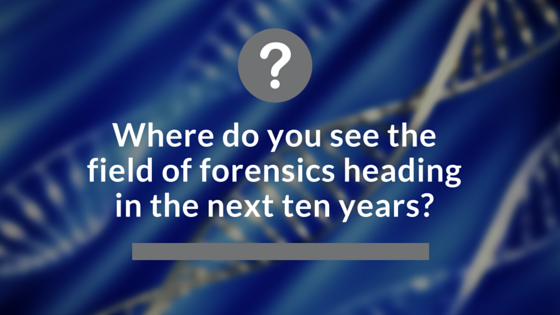We asked our ISHI 26 speakers what technologies they are most excited about or where they saw the field heading in the next 10 years. Here’s what they had to say!
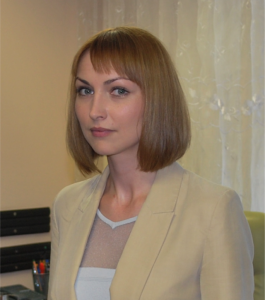
I hope that it will be possible to establish robust methodology and standard guidelines for next generation sequencing involving few copies of DNA as an input.
– Magdalena Bus, Uppsala University
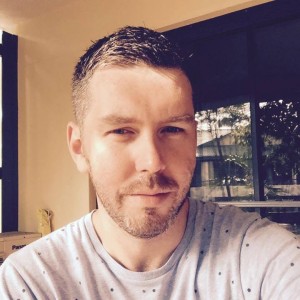 I believe that there will be an increased uptake of expert systems such as STRmix™ and TrueAllele® for the interpretation of DNA profiles. This will hopefully improve consistency between laboratories when evaluating DNA profiles, particularly complex profiles such as mixed and degraded samples.
I believe that there will be an increased uptake of expert systems such as STRmix™ and TrueAllele® for the interpretation of DNA profiles. This will hopefully improve consistency between laboratories when evaluating DNA profiles, particularly complex profiles such as mixed and degraded samples.
– Zane Kerr, NSW Forensic & Analytical Science Service
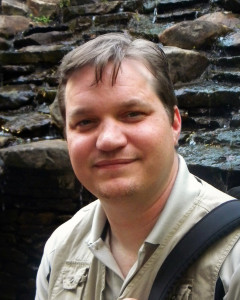 Next generation sequencing (NGS) certainly has everyone’s interest at the moment, but realistically it’s probably another 5-10 years out from being routinely used in casework. The NGS application that is exciting to me is to be able to obtain comprehensive genetic information (e.g. autosomal, Y-STRs, SNPs, and mRNA) all from the same sample. If NGS can be optimized over the next few years to interpret and deconvolute complex mixtures, this technology in my view would be as significant to DNA typing as when PCR and STRs were first introduced and utilized.
Next generation sequencing (NGS) certainly has everyone’s interest at the moment, but realistically it’s probably another 5-10 years out from being routinely used in casework. The NGS application that is exciting to me is to be able to obtain comprehensive genetic information (e.g. autosomal, Y-STRs, SNPs, and mRNA) all from the same sample. If NGS can be optimized over the next few years to interpret and deconvolute complex mixtures, this technology in my view would be as significant to DNA typing as when PCR and STRs were first introduced and utilized.
– Joel Sutton, United States Criminal Investigation Laboratory, Defense Forensic Science Center
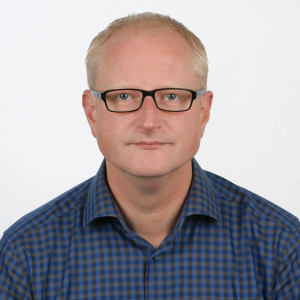
NGS, Phenotype determination via SNPs, semi and full continuous models for biostatical evaluation of DNA mixtures
– Carsten Proff, BKA Federal Criminal Police Office
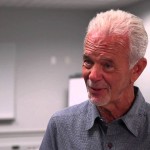
I wish I could say I’m excited about the prospects for familial DNA searching being implemented system-wide, but it seems like the resistance to it has won out. I wish I could say that someone will finally develop and introduce a cold hit tracking system to ensure that society is seeing the full benefit of the cold hits that occur, but that isn’t going to happen either. NGS promises to resolve some of the more challenging cases, so that is something to look forward to.
– Rock Harmon, Alameda County District Attorney’s Office, retired
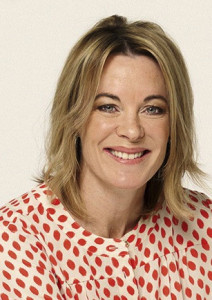
Bearing in mind that [South Africa] is still lagging behind somewhat in utilising the amazing developments in DNA profiling being applied in international criminal justice systems, I would say that currently for me, the most exciting technology in a [South Africa] context would be the ability to differentiate between mixed profiles – we have a huge problem with gang rape in SA and this would change the way in which these types of cases are resolved.
– Vanessa Lynch, DNA Project
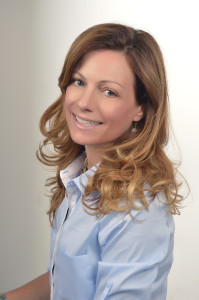
I do believe that OUR technology is the most exciting and I am sure that it will help to build a new approach in forensic.
– Francesca Fontana, Silicon Biosystems, S.P.A.
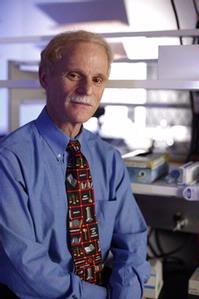
Massively parallel sequencing is the most interesting technology. Also see the field taking on more hypothesis driven approaches.
– Bruce Budowle, Institute of Applied Genetics, University of North Texas Health Science Center
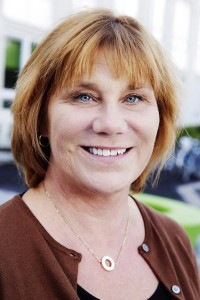
Next Generation Sequencing and phenotype prediction.
– Marie Allen, Uppsala University
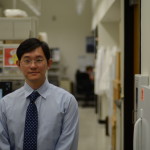
I hope new technologies can help us better interpret the results of mixture samples, degraded samples and minimal samples.
– Xiangpei Zeng, University of North Texas Health Science Center
 I am excited to see the new capabilities that next-generation sequencing can bring to the field. It’s revolutionized medicine, and I’d love to see those advances implemented in forensics.
I am excited to see the new capabilities that next-generation sequencing can bring to the field. It’s revolutionized medicine, and I’d love to see those advances implemented in forensics.
– Ellen Greytak, Parabon Nanolabs
 I am excited about the potential of evolving technologies in genetic marker sequencing, phenotypic markers, and automation. In the next ten years, I believe forensic laboratories will have incorporated sequencing into routine casework. I also see standards and guidelines will have been developed and implemented to generate improved consistency between interpretations provided by laboratories, especially in the area of mixtures.
I am excited about the potential of evolving technologies in genetic marker sequencing, phenotypic markers, and automation. In the next ten years, I believe forensic laboratories will have incorporated sequencing into routine casework. I also see standards and guidelines will have been developed and implemented to generate improved consistency between interpretations provided by laboratories, especially in the area of mixtures.
– George Herrin, Georgia Bureau of Investigation
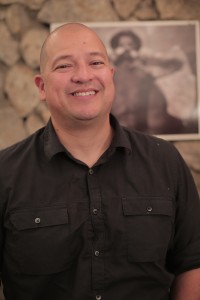
Hopefully, developing new technology to gather information from degraded samples and the new generation in sequencing.
– Fredy Peccerrelli, Forensic Anthropology Foundation of Guatemala
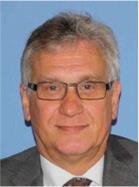
Massive Parallel Sequencing and Rapid DNA Testing
– Kees van der Beek, Netherlands Forensic Institute
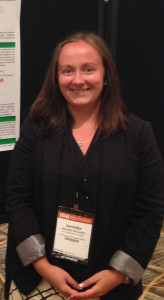
I am most excited about the opportunities massively parallel sequencing technologies bring to the field of forensic science!
– Jennifer Churchill, University of North Texas Health Science Center
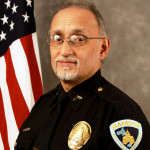 RapidDNA processing. As a police officer I see that as an incredible tool for identifying recovered bodies, suspects of violent crimes, and helping in locating and identifying victims of human trafficking.
RapidDNA processing. As a police officer I see that as an incredible tool for identifying recovered bodies, suspects of violent crimes, and helping in locating and identifying victims of human trafficking.
– Daniel Roman, Madison Police Department
WOULD YOU LIKE TO SEE MORE ARTICLES LIKE THIS? SUBSCRIBE TO THE ISHI BLOG BELOW!

